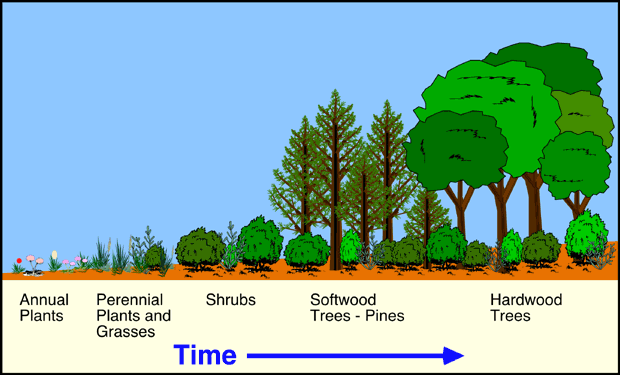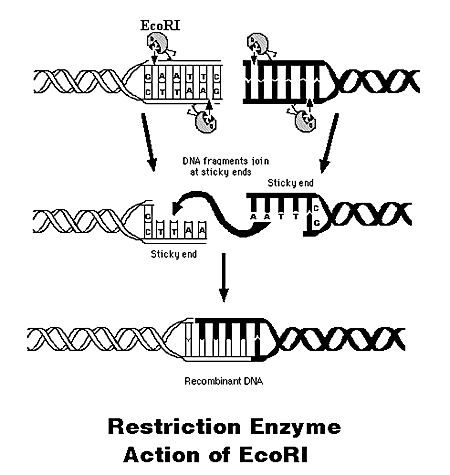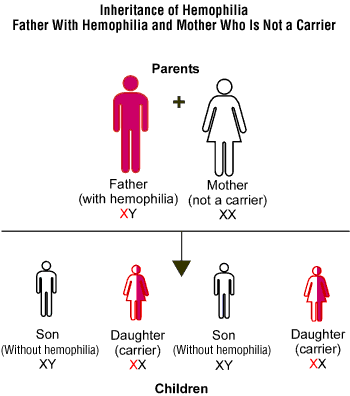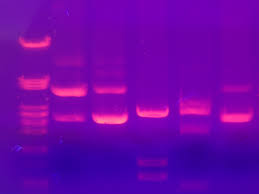Interested in receiving extra credit? Read one article listed below. Write a summary of the article and explain how it is related to the Living Environment curriculum. Be sure to include the name, date, and publication of the article in your assignment. You can receive up to 5 points for your summary. Limit 1article per student. Due Wednesday, 6/23/10, but feel free to hand in your assignment at any time.
New Estimates Double the Rate of Oil Flowing Into the Gulf
Plumes of Oil Below the Surface Raise New Concerns
Voracious Invader May Be Nearing Lake Michigan
An Underwater Fight Is Waged Against San Francisco Bay
Japan Defies Australia on Whaling
Monday, June 14, 2010
Tuesday, June 8, 2010
Saturn moon's methane mystifies experts
 Click here to read an article about the abundance of methane gas on the surface of Titan. Was this gas produced by living organisms?
Click here to read an article about the abundance of methane gas on the surface of Titan. Was this gas produced by living organisms?
Wednesday, June 2, 2010
Thermal Pollution

Click here to view an animation representing the thermal pollution of a river by a power station. Cold water is pumped from the river and hot water pumped back into the river.
Ozone Layer

Click here to learn more about the ozone layer. What are the causes of ozone depletion? What can we do to help?
Biomagnification

Click here to view a short animation that illustrates how toxic chemicals build up in an ecosystem.
Here is a second animation that illustrates how DDT accumulates in the food chain of an aquatic ecosystem.
Acid Rain Animation

Click here to view an interactive animation showing how power stations contribute to the formation of acid rain. Click the highlighted areas to reveal how acid rain pollutes the environment.
Click here to view a second animation about acid rain by the EPA.
Friday, May 28, 2010
Population Clock

Click here to view the current world population.
What is the message in the cartoon displayed on the right?
Global Warming
 Click here to read about the causes, effects, science, and solutions of global warming.
Click here to read about the causes, effects, science, and solutions of global warming. Click here to view an animation about global warming.
What are the causes of global warming?
How is it effecting the Earth?
What can we do to stop or slow down global warming?
Thursday, May 27, 2010
Deforestation

Do you want to know more about the negative effects of deforestation? Click here to read more. Be sure to click on the photo gallery at the bottom of the page.
What is the leading cause of deforestation in the Brazilian Amazon?
What is illegal logging and how does it contribute to deforestation?
Why did the government of Madagascar slash and burn one of the most biologically rich areas on Earth?
Invasive Species
 Did you know that the Asian Carp, a non native species in the US, has already disrupted the ecosystem in the Mississippi River and is now headed towards Lake Michigan? How did the carp get here in the first space? What effect will the Asian Carp have on the ecosystem and native fish populations?
Did you know that the Asian Carp, a non native species in the US, has already disrupted the ecosystem in the Mississippi River and is now headed towards Lake Michigan? How did the carp get here in the first space? What effect will the Asian Carp have on the ecosystem and native fish populations? Voracious Invader May Be Nearing Lake Michigan
Fight Against Asian Carp Threatens Fragile Great Lake Unity First Traces of Asian
Carp Found in Lake Michigan
Friday, May 21, 2010
After School Review Sessions
I would like to offer 3 weeks of after school review sessions in preparation for the Living Environment Regents Exam. The Living Environment Regents Exam will take place on Wednesday, 6/16/10. I will offer at least two sessions each week since many students already have after school activities and engagements. It is only necessary to attend one session each week. Each review session will be held from 3:15 - 4:15 in room 311.
in preparation for the Living Environment Regents Exam. The Living Environment Regents Exam will take place on Wednesday, 6/16/10. I will offer at least two sessions each week since many students already have after school activities and engagements. It is only necessary to attend one session each week. Each review session will be held from 3:15 - 4:15 in room 311.
Please note changes in to Weeks 2 and 3 below. I apologize for any confusion. Apparently, scheduling is not a strength of mine!
Review Schedule:
Week 1: The Cell, Transport, and Scientific Method
Dates: Tuesday, 5/25 Wednesday, 5/26 Thursday 5/27
Week 2: Genetics
Dates: Tuesday, 6/1 and Wednesday, 6/2
Week 3: Mitosis, Meiosis, Reproduction
Dates: Thursday, 6/3 and Wednesday, 6/9 (Tuesday, 6/8 canceled due to 1/2 day)
Please complete a permission slip if you would like to attend the review sessions. Permission slips can be downloaded from eBoard. Please return the permission slips quickly as space is limited.
 in preparation for the Living Environment Regents Exam. The Living Environment Regents Exam will take place on Wednesday, 6/16/10. I will offer at least two sessions each week since many students already have after school activities and engagements. It is only necessary to attend one session each week. Each review session will be held from 3:15 - 4:15 in room 311.
in preparation for the Living Environment Regents Exam. The Living Environment Regents Exam will take place on Wednesday, 6/16/10. I will offer at least two sessions each week since many students already have after school activities and engagements. It is only necessary to attend one session each week. Each review session will be held from 3:15 - 4:15 in room 311. Please note changes in to Weeks 2 and 3 below. I apologize for any confusion. Apparently, scheduling is not a strength of mine!
Review Schedule:
Week 1: The Cell, Transport, and Scientific Method
Dates: Tuesday, 5/25 Wednesday, 5/26 Thursday 5/27
Week 2: Genetics
Dates: Tuesday, 6/1 and Wednesday, 6/2
Week 3: Mitosis, Meiosis, Reproduction
Dates: Thursday, 6/3 and Wednesday, 6/9 (Tuesday, 6/8 canceled due to 1/2 day)
Please complete a permission slip if you would like to attend the review sessions. Permission slips can be downloaded from eBoard. Please return the permission slips quickly as space is limited.
Current Events: Synthetic Cell
 Did you know that researchers created the first synthetic cell? Scientists believe that these microbes can be used to create biofuels and vaccines. Click here to read more.
Did you know that researchers created the first synthetic cell? Scientists believe that these microbes can be used to create biofuels and vaccines. Click here to read more.What is your opinion of synthetic cells?
Wednesday, May 19, 2010
Gulf of Mexico Oil Spill
 Have you been following the oil spill in the Gulf of Mexico? Click on the articles below to read the latest information.
Have you been following the oil spill in the Gulf of Mexico? Click on the articles below to read the latest information.How do you think the oil spill will affect the food web in the Gulf of Mexico?
Video: BP Reduces Gulf Oil Leak
** Special thanks to my dad for emailing me the articles about the oil spill!**
** Special thanks to my dad for emailing me the articles about the oil spill!**
Tuesday, May 18, 2010
Ecological Succession
 Click here to view a very short animation about ecological succession. What is the name of each stage? What is the difference between each stage?
Click here to view a very short animation about ecological succession. What is the name of each stage? What is the difference between each stage?Did you know that ecological succession can occur after a glacier has passed through an area? Watch this short, 3 part animation about succession in Glacier Bay, Alaska. Part 1, Part 2, Part 3.
Wednesday, May 12, 2010
I need your help!
 Do you have 5 minutes? Click here to read about an exciting new website and answer a few questions.
Do you have 5 minutes? Click here to read about an exciting new website and answer a few questions. Baxter Hall is being launched by a close friend of mine - all feedback is greatly appreciated. Thanks:)
Please respond directly the email address on the flyer.
Please respond directly the email address on the flyer.
Energy Pyramid
Click here for an animation about an energy pyramid.
 In a healthy ecosystem there are lots of producers, some herbivores, and not many carnivores. Why is this important?
In a healthy ecosystem there are lots of producers, some herbivores, and not many carnivores. Why is this important?Decomposers
 Click here to learn more about decomposers.
Click here to learn more about decomposers. What important nutrient is recycled back to the environment by this unique group of organisms? Can you give examples of decomposers?
Take the quiz at the end of the animation (the squirrels are SO cute!).
Food Chain Video
 From the tiniest shrimp to the biggest whale, all living things play roles in a food chain. This short cartoon explains just how a food chain works. You'll see why every creature's part is important.
From the tiniest shrimp to the biggest whale, all living things play roles in a food chain. This short cartoon explains just how a food chain works. You'll see why every creature's part is important. Take the quiz when you finished. How did you do?
Did anyone read the Sea Monsters article? What did you think?
Click here to create your own food web! Print your food web when you are finished and share with your class. Enjoy:)
Click here to create your own food web! Print your food web when you are finished and share with your class. Enjoy:)
Wednesday, May 5, 2010
Interactive Tree of Life
 Did you know that the Hippopotamus is related to the Sperm Whale? Or that the Ostrich and the Tyrannosaurus have common links? Explore the connections in the natural world, and learn about evolution with this Interactive Tree of Life. Can you describe primitive life? What organisms did you read about?
Did you know that the Hippopotamus is related to the Sperm Whale? Or that the Ostrich and the Tyrannosaurus have common links? Explore the connections in the natural world, and learn about evolution with this Interactive Tree of Life. Can you describe primitive life? What organisms did you read about?Click here to view the Tree Of Life video and interactive from class.
Tuesday, May 4, 2010
Meet Darwin in the Tree of Life Game!
 Click here to play a time machine game where you travel to London in 1840 and meet Charles Darwin! You have to download UnityWebPlayer to play the game so make sure you have permission from your parents.
Click here to play a time machine game where you travel to London in 1840 and meet Charles Darwin! You have to download UnityWebPlayer to play the game so make sure you have permission from your parents.What did you think of the game?
Friday, April 30, 2010
Natural Selection in the Galapagos Islands
 Click here to view an animation that shows natural selection occurring on a small island called Daphne Major in the Galapagos.
Click here to view an animation that shows natural selection occurring on a small island called Daphne Major in the Galapagos. Why were the large-beaked finches able to survive the drought that occurred on Daphne Major in 1977? Why did the average beak size return to normal after the drought in 1977?
Click here to view a second animation about a fictional organism called the pollenpeeper. Witness how the pollenpeeper evolves as you observe natural selection and adaptive radiation in action.
Evolution of Organelles
 Click here to view an animation that explains the Endosymbiotic Theory. It's hard to believe that mitochondria and chloroplasts were once independent cells! What do you think?
Click here to view an animation that explains the Endosymbiotic Theory. It's hard to believe that mitochondria and chloroplasts were once independent cells! What do you think?Evidence of Evolution - The Fossil Record
 Click here to try a simulation that investigates how scientists piece together events in the Earth's history. How did you do?
Click here to try a simulation that investigates how scientists piece together events in the Earth's history. How did you do?Thursday, April 29, 2010
Co - Evolution
 In order to survive and reproduce, each organism must adapt to its physical environment, as well as to the other organisms in that environment it shares relationships with. As you dive through Australia's Great Barrier Reef in this Evolution Web feature, you'll discover relationships that have evolved between the resident organisms. Some are predators and prey; others compete for space, food, or mates; and still others are dependent or codependent on each other.
In order to survive and reproduce, each organism must adapt to its physical environment, as well as to the other organisms in that environment it shares relationships with. As you dive through Australia's Great Barrier Reef in this Evolution Web feature, you'll discover relationships that have evolved between the resident organisms. Some are predators and prey; others compete for space, food, or mates; and still others are dependent or codependent on each other. Can you identify examples of co-evolution that occur in the Great Barrier Reef?
Monday, April 26, 2010
Evolution Games!
Sea Monsters Adventure Game - Can you survive the seven deadliest seas of all time in this game? Take the plunge!
Big Al Game - Eat enough to grow from a hatchling to an adult male Allosaurus. There are four levels to progress through as you gain more weight. At the start of each level you will be asked a question. How you answer will affect your life as Big Al.
How did you do? Did you enjoy the games? Were they helpful in understanding the principles of evolution?
Big Al Game - Eat enough to grow from a hatchling to an adult male Allosaurus. There are four levels to progress through as you gain more weight. At the start of each level you will be asked a question. How you answer will affect your life as Big Al.
How did you do? Did you enjoy the games? Were they helpful in understanding the principles of evolution?
Evolution Videos from Class
Click here to view the evolution videos from class. Which video was your favorite? Most helpful? Why??
Natural Selection Animation
 Click here to complete an animation about natural selection. You will play the role of a GOONEY BIRD. GOONEY BIRDS eat UNIQUE bugs and always capture the first bug they see. There are 3 rounds of hunting. You have to capture a specific number of bugs in each round. Remember to capture the FIRST bug you see! At the end of the 3 rounds, you will see the colors of the surviving and captured bugs.
Click here to complete an animation about natural selection. You will play the role of a GOONEY BIRD. GOONEY BIRDS eat UNIQUE bugs and always capture the first bug they see. There are 3 rounds of hunting. You have to capture a specific number of bugs in each round. Remember to capture the FIRST bug you see! At the end of the 3 rounds, you will see the colors of the surviving and captured bugs.What traits allowed the offspring to survive? What colors were most commonly represented by the surviving bugs? What colors were most commonly represented by the captured bugs? What explains this difference in color?
Tuesday, April 20, 2010
Stem Cell Research
Click here to read an article about stem cell research.
Click here to read an article by JDRF (Juvenile Diabetes Research Foundation) that explains how embryonic stem cells can be used in diabetes research.
What do you think about stem cell research? Is it ethical or unethical? Who should pay for this research - the government or private donations?
Monday, April 19, 2010
Extra Credit - Evolution
Interested in receiving extra credit? Read one article listed below. Write a summary of the article and explain how it is related to the Living Environment curriculum. Be sure to include the name, date, and publication of the article in your assignment. You can receive up to 5 points for your summary. Limit 1article per student. Due Wednesday, 5/5/10, but feel free to hand in your assignment at any time.
Friday, April 16, 2010
Twins!
Click here to view an animation about identical and fraternal twins.
Does anyone know what type of twins are featured in the picture at the right? How do you know?
Special thanks to Sarah P. and Ashley L. for suggestion this post!
Special thanks to Sarah P. and Ashley L. for suggestion this post!
Wednesday, April 14, 2010
Monday, April 12, 2010
Menstrual Cycle Animation
 Click here for an animation about the menstrual cycle.
Click here for an animation about the menstrual cycle.Click here for a second animation about the menstrual cycle. This one is more advanced, but helpful.
Thursday, April 8, 2010
Female Reproductive System
Click here to access a website about the female reproductive system. On the website, click on the diagram of the female reproductive system, and then if you click on each of the organs a bubble will appear with information about the organ.
1. What are the main female hormones?
2. What hormones stimulate the gonads to produce their hormones?
1. What are the main female hormones?
2. What hormones stimulate the gonads to produce their hormones?
Male Reproductive System
Click here to access a website with information on the male reproductive system.
On the website you will find links to articles with useful information on human general health. Which articles and pieces of information did you find more interesting?
1. Where does meiosis occur in males?
2. What is the product of meiosis in males?
3. What is the main hormone produced by the testicles?
4. What is the function of this male hormone?
5. Can you identify and describe the function of three organs of the male reproductive system?
On the website you will find links to articles with useful information on human general health. Which articles and pieces of information did you find more interesting?
1. Where does meiosis occur in males?
2. What is the product of meiosis in males?
3. What is the main hormone produced by the testicles?
4. What is the function of this male hormone?
5. Can you identify and describe the function of three organs of the male reproductive system?
Tuesday, March 23, 2010
Spermatogenesis and Oogenesis
 Click here to view an animation about spermatogenesis. Take the quiz at the end. How did you do?
Click here to view an animation about spermatogenesis. Take the quiz at the end. How did you do?Click here to view an animation about oogenesis.
Meiosis
Click here to view a detailed animation about meiosis.
Click here to view an animation that describes nondisjunction. Nondisjunction occurs when there is a mistake during mitosis or meiosis. What happens to the cells that are made through nondisjunction?
More meiosis animations here and here.
More meiosis animations here and here.
Cancer - Uncontrolled Mitosis
Cancer is any malignant growth or tumor caused by abnormal and uncontrolled cell division; it may spread to other parts of the body through the lymphatic system or the blood stream.
Click on animation 1 to see how cancer occurs in body cells.
Click here for a more advanced explanation.
Friday, March 19, 2010
This week in current events
How does each article relate to Living Environment Curriculum? Explain?
Which article was your favorite?
**Special thanks to Michael Nguy!**
Thursday, March 18, 2010
Mitosis Animation
 Click here for a narrated animation of mitosis. Take the quiz when you are finished. How did you do?
Click here for a narrated animation of mitosis. Take the quiz when you are finished. How did you do?Do you want to view the animations we watched during class? Click here to view the animation by CELLS alive and here to view the second animation.
Enjoy!
Karyotyping Activity
 Click here to complete a karyotype for 4 different patients. Click on, "patient histories," at the bottom of the page to access their chromosomes.
Click here to complete a karyotype for 4 different patients. Click on, "patient histories," at the bottom of the page to access their chromosomes.What did you learn about each patient?
Sunday, March 14, 2010
Click and Clone a Mouse
 Click here to click and clone Mimi. This is the same animation we used in class.
Click here to click and clone Mimi. This is the same animation we used in class.Do you support cloning animals? Is it ethical? Why or why not?
Tuesday, March 9, 2010
Science Summer Camp
Are you interested in attending Science Summer Camp 2010? Click here for more details about the exciting programs that are offered.
Online application
Let me know if anyone decides to sign up - it looks like it will be a lot of fun:)
Online application
Let me know if anyone decides to sign up - it looks like it will be a lot of fun:)
Restriction Enzyme Animation
 Click here for an animation that explains how restriction enzymes cut DNA.
Click here for an animation that explains how restriction enzymes cut DNA.Still confused? Think of it this way: our bodies naturally produce restriction enzymes. We call them digestive enzymes, like amylase, trypsin, pepsin, protease, lipase, etc. These enzymes are not effective to cut DNA for genetic engineering purposes because they cut DNA randomly. That's why scientists rely on restriction enzymes produced by bacteria. These enzymes can cut DNA at precise locations.
A restriction enzyme recognizes and cuts DNA only at a particular sequence of nucleotides. For example, the bacterium Hemophilus aegypticus produces an enzyme named HaeIII that cuts DNA wherever it encounters the sequence
5'GGCC3'
3'CCGG5'
The cut is made between the adjacent G and C. HaeIII cuts straight across the double helix producing "blunt" ends. However, many restriction enzymes cut in an offset manner (like HIND III that we used during the gene splicing simulation). The ends of the cut have an overhanging piece of single-stranded DNA. These are called "sticky ends" because they are able to form base pairs with any DNA molecule that contains the complementary sticky end. Any other source of DNA treated with the same enzyme will produce the same cuts.
Mixed together, these molecules can join with each other by base pairing between their sticky ends. The two DNA molecules can be joined by another enzyme, DNA ligase. The result is a molecule of recombinant DNA (rDNA).
The ability to produce recombinant DNA molecules has allowed geneticists to produce human insulin (for diabetics), human factor VIII (for males with hemophilia A), and other proteins used in human therapy all were made possible by recombinant DNA.
Monday, March 8, 2010
Friday, March 5, 2010
Selective Breeding
 Click here to practice your selective breeding skills. Can you create the largest crop of corn? Try it!
Click here to practice your selective breeding skills. Can you create the largest crop of corn? Try it!Mutations
 Click here to view an animation that explains how mutations occur in your DNA.
Click here to view an animation that explains how mutations occur in your DNA. Click here to view an animation about sickle cell anemia, a genetic disease caused by a mutation in the hemoglobin gene.
Click here to view an animation that explains how a drug, Gleevec, can stop the harmful effects of a specific type of Leukemia.
Click here to read an article about the genetic cause of a rare bleeding disorder. Special thanks to Maya Shaar!
Click here to read an article about the genetic cause of a rare bleeding disorder. Special thanks to Maya Shaar!
Friday, February 26, 2010
Quiz 7
Quiz 7 is scheduled for Tuesday, 3/2 even though school is canceled today. See eboard for more details about this quiz. We will complete the review sheet in class on Monday, 3/1.
Thursday, February 25, 2010
Protein Synthesis Animations
 Click here to view an animation of protein synthesis. This is similar to the DNA replication video we watched in class.
Click here to view an animation of protein synthesis. This is similar to the DNA replication video we watched in class.Click here to view a second animation (note the music in the background!)
Videos from class: transcription and translation.
Still having trouble understanding protein synthesis? Click here for a step by step animation that explains all of the steps of protein synthesis in detail.
Hope these websites are helpful!
Videos from class: transcription and translation.
Still having trouble understanding protein synthesis? Click here for a step by step animation that explains all of the steps of protein synthesis in detail.
Hope these websites are helpful!
Wednesday, February 24, 2010
Extra Credit - Genetics
Interested in receiving extra credit? Read one article listed below. Write a summary of the article and explain how it is related to the Living Environment curriculum. Be sure to include the name, date, and publication of the article in your assignment. You can receive up to 5 points for your summary. Limit 1article per student. Due Friday, 3/12/10, but feel free to hand in your assignment at any time.
Target Cancer - After Long Fight, Melanoma Drug Gives Sudden Reprieve
Telomeres - A Conversation with Carol W. Grieder - On Winning a Nobel Prize
Three Win Nobel for Ribosome Research
A Conversation with Martin Chalfie -Watching Life in Real Time - Interview
Two Monkeys Get the Gift of Color
E.U. Clears Biotech Potato for Cultivation
Telomeres - A Conversation with Carol W. Grieder - On Winning a Nobel Prize
Three Win Nobel for Ribosome Research
A Conversation with Martin Chalfie -Watching Life in Real Time - Interview
Two Monkeys Get the Gift of Color
E.U. Clears Biotech Potato for Cultivation
Monday, February 22, 2010
Monday, February 15, 2010
DNA - The Basics
Do you need a refresher about DNA? Genes? Chromosomes? Proteins? Heredity? Traits? Click here for a tutorial.
Why DNA isn't your Destiny
 Click here to read an article from Time Magazine about an expanding area in genetics, epigenetics.
Click here to read an article from Time Magazine about an expanding area in genetics, epigenetics. What is the epigenome? How did B vitamins alter the expression of the agouti gene in pregnant mice?
What are examples of how gene expression can be changed?** What is the potential for epigentic research in the future?
So...does the environment affect gene expression????
A special thanks to Sarah Prutchenko for showing me this article:)
**Remember, epigenetics does NOT change DNA!
Thursday, February 11, 2010
IBM Pursues $1,000 Personal Genome
 Did you ever wonder what your genome looks like? Wouldn't it be fantastic if doctors could personalize medicine based on your own DNA?
Did you ever wonder what your genome looks like? Wouldn't it be fantastic if doctors could personalize medicine based on your own DNA?Click here to read an article that explains how IBM is developing new technology that will make the process of decoding individual genomes much cheaper and faster.
Wow, technology is truly amazing! What do you think?
Ancient Man in Greenland Has Genome Decoded
 Click here to read an article about how the entire genome of a man that lived 4,000 years ago was decoded.
Click here to read an article about how the entire genome of a man that lived 4,000 years ago was decoded.Where did the DNA sample come from? What information were scientists about to gather about this ancient man and his people?
Wow - I thought I was getting old!
Tuesday, February 9, 2010
Mendelian laws also apply to humans
 Did you know that a pedigree can be used to trace human genetic heredity? Click here to view an animation of a pedigree of the Queen of England (the part of the family leading up to the Russian Royal House - the Romanovs). You will see how the gene for hemophilia is passed on from one generation to the next.
Did you know that a pedigree can be used to trace human genetic heredity? Click here to view an animation of a pedigree of the Queen of England (the part of the family leading up to the Russian Royal House - the Romanovs). You will see how the gene for hemophilia is passed on from one generation to the next.Monday, February 8, 2010
DNA Timeline
 Do you want to know more about the history of DNA research? Click here to view an interactive timeline of important DNA events from Mendel to today.
Do you want to know more about the history of DNA research? Click here to view an interactive timeline of important DNA events from Mendel to today.What event or person is most fascinating to you? My favorite scientist from the timeline is Frierich Miescher. He was able to study DNA in the late 1800's by extracting pus from bandages at a local hospital. Gross and innovative the same time!!!!
Friday, February 5, 2010
Classical Genetics
 Want to learn more about genetics? Did you know that children resemble their parents? That genes come in pairs? Click here to learn more.
Want to learn more about genetics? Did you know that children resemble their parents? That genes come in pairs? Click here to learn more.Be sure to click on the links of the right as well as concept, animation, and gallery links on the bottom of the page.
Enjoy!
Wednesday, February 3, 2010
Vaccine study retracted
Click here to read an article from US New and World Report that states that the link between the MMR (measles, mumps, and rubella)  vaccine and autism is false. Unfortunately, scientists still do not know what causes autism and a great deal of research needs to be done in the future.
vaccine and autism is false. Unfortunately, scientists still do not know what causes autism and a great deal of research needs to be done in the future.

What are your thoughts on this issue? Do you think The Lancet should have published this study in first place? Why or why not?
Subscribe to:
Posts (Atom)








